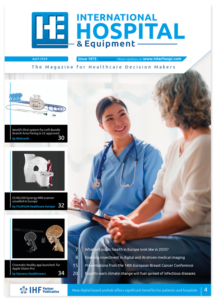Salivary vesicles found to activate blood clotting in haemophilia A
New research from the Medical University of Vienna has identified a mechanism explaining why people with haemophilia A rarely experience oral bleeding, despite their blood clotting deficiency. The finding could have implications for understanding bleeding patterns in different coagulation disorders.
Researchers have discovered that saliva contains specialised vesicles carrying protein complexes that can trigger blood coagulation in people with haemophilia A, potentially explaining why these patients rarely experience problematic oral bleeding. The study, published recently in Blood, provides fresh insights into the complex mechanisms of blood clotting in this inherited disorder.
Understanding the mechanism
The research team, led by Johannes Thaler and Cihan Ay from the Medical University of Vienna, in collaboration with Rienk Nieuwland from Amsterdam University Medical Centers, identified that saliva from haemophilia A patients contains extracellular vesicles with extrinsic tenase complexes. These complexes, comprising tissue factor and factor VIIa, initiate the coagulation cascade upon contact with blood.
The finding helps explain a long-observed clinical phenomenon: while people with haemophilia A frequently experience joint bleeding, they rarely suffer from persistent oral mucosal bleeding. The research demonstrates that when these salivary vesicles contact blood deficient in factor VIII (the protein missing in haemophilia A), they can still generate factor Xa, compensating for the inability to produce it through the usual pathway.
Historical connections
The study builds upon largely forgotten research from the 1930s, when Viennese paediatrician Alphons Solé discovered that maternal milk could effectively stop bleeding in haemophilia patients. At that time, the average life expectancy for people with haemophilia was just eight years.
“These results show that it can be very rewarding to re-evaluate historical scientific work in order to develop innovative approaches for research and potentially also for the targeted treatment of patients,” notes Johannes Thaler, commenting on the significance of the findings.
Contrasting conditions
The researchers also examined saliva from people with factor VII deficiency, a different bleeding disorder where oral bleeding is common. They found that these patients’ saliva lacks functional extrinsic tenase complexes because their vesicles do not contain factor VII. This difference explains the contrasting bleeding patterns between the two conditions.
The study demonstrated that adding small amounts of recombinant factor VIIa could restore the blood-clotting potential of saliva in people with factor VII deficiency, providing additional insights into the mechanism.
Clinical implications
This research contributes to the growing understanding of how different body fluids influence blood coagulation. The team previously discovered similar coagulation-promoting properties in maternal milk, amniotic fluid, and urine, all attributed to the presence of extracellular vesicles with extrinsic tenase complexes.
These findings could help clinicians better understand and predict bleeding patterns in different coagulation disorders, potentially leading to more targeted treatment approaches. The research also highlights the importance of considering the role of body fluids beyond blood in maintaining haemostasis.
The comprehensive study included analyses of whole blood, plasma, and chromogenic substrate testing, providing robust evidence for the mechanism of action of these salivary vesicles in coagulation.
Reference:
Thaler, J., et al. (2024). Saliva of persons with hemophilia A triggers coagulation via extrinsic tenase complexes. Blood. doi: https://doi.org/10.1182/blood.2024025093


